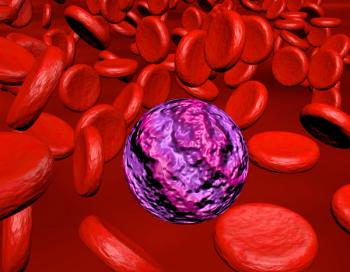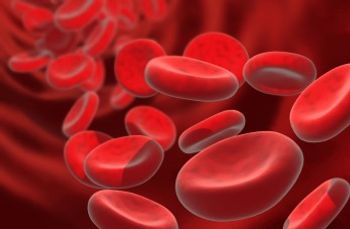
- Oncology Vol 28 No 4_Suppl_1
- Volume 28
- Issue 4_Suppl_1
(S044) Repeated Measures Analyses of the Common Terminology Criteria for Adverse Events (CTCAE v3.0)-Based Dermatitis Toxicities in Breast Cancer Patients Receiving Radiotherapy in a Phase III Randomized Trial of Mometasone Furoate, N06c4 (Alliance)
Using repeated measures analyses, we analyzed the data from the originally published N06C4 prospective trial and present here the CTCAE-based temporal profile of acute skin toxicities, when time factor was considered.
Terence T. Sio, MD, MS, Pamela J. Atherton, MS, David J. Schwartz, MD, Jeff A. Sloan, PhD, Drew K. Seisler, BS, James A. Martenson, MD, Patricia C. Griffin, MD, Roscoe F. Morton, MD, Jon C. Anders, MD, Thomas J. Stoffel, MD, Robert E. Haselow, MD, Rex B. Mowat, MD, Michelle A. Neben Wittich, MD, James D. Bearden III, MD, Charles L. Loprinzi, MD, Robert C. Miller, MD, MS; Mayo Clinic; Upstate Carolina CCOP; Iowa Oncology; Wichita CCOP; Cedar Rapids CCOP; Metro-Minnesota CCOP; Toledo Community Hospital CCOP
Purpose: The evolution of dermatological symptoms over time as measured by provider-assessed Common Terminology Criteria for Adverse Events version 3.0 (CTCAE v3.0) and patient-reported outcomes (PROs) is not well quantified. Using repeated measures analyses, we analyzed the data from the originally published N06C4 prospective trial and present here the CTCAE-based temporal profile of acute skin toxicities, when time factor was considered. The PRO results were previously reported (Abstract, ASTRO 2013, TT Sio and RC Miller et al).
Patients and Methods: A total of 176 breast cancer patients (including ductal carcinoma in situ) undergoing external beam radiotherapy (RT) to the breast or chest wall were randomized to receive daily mometasone or placebo cream. Temporal symptoms were assessed for up to 10 cycles; the provider-reported CTCAEs, including radiation (XRT)-induced dermatitis, pruritus, skin burn, skin disorder, skin striae, skin hypopigmentation, skin atrophy, and skin infection, were collected. The analyzed groups included XRT-induced dermatitis, dermatitis-related symptoms (seven items, excluding XRT-induced dermatitis), and worst dermatitis-related symptoms (eight items included). We applied repeated measures analyses of variance with mixed models (Proc Mixed), Pearson’s correlation, and risk analyses methodologies. Adverse event (AE) grades were modeled using arm and cycle as classification variables with interaction effects. A maximum grade of any dermatitis-related symptom was calculated per patient per evaluation cycle.
Results: One hundred sixty-nine (96%) patients were evaluable for toxicity. CTCAE symptoms typically started during Cycles 3 and 4, peaked between Cycles 4 and 7, and subsided after Cycles 8 and 9. Of the evaluable patients at each cycle, the grade 2+ (2 or higher) AE rates were: 26 (16%) of 167 patients in Cycle 4; 47 (28%) of 165 patients in Cycle 5; 58 (38%) of 151 patients in Cycle 6; 39 (36%) of 109 patients in Cycle 7; 4 (22%) of 18 patients in Cycle 8; and 1 (50%) of 2 patients in Cycle 9. For dermatitis-related symptoms, 110 (20%) of 537 events were grade 2 or higher in the mometasone arm versus 124 (18%) of 688 events in the placebo arm; 7 (1%) and 16 (3%) grade 3 toxicities were reported in the mometasone and placebo arms, respectively. Similar trends were observed for radiation-induced dermatitis, with event frequencies about half of that for dermatitis-related symptoms. Repeated measures analysis results showed that significant differences were detected across cycles in five out of nine symptoms and in the interaction between arms across cycles in two out of nine symptoms, including radiation-induced dermatitis and the maximum grade of dermatitis-related symptoms (P < .001, favoring mometasone). The CTCAE scales correlated weakly with the PRO tools by Pearson’s statistics. Risk analyses confirmed these results.
Conclusions: The CTCAE tools captured a detailed range of patient experience and symptoms, when the time variable was taken into consideration. Our results strengthened the conclusion drawn from the original report that mometasone reduced acute skin toxicities. The use of frequent CTCAE-based assessments, along with PRO surveys, to accurately assess a patient’s experience of symptom types and intensity over time should be encouraged in the design of future clinical trials.
Proceedings of the 96th Annual Meeting of the American Radium Society -
Articles in this issue
Newsletter
Stay up to date on recent advances in the multidisciplinary approach to cancer.


















































































